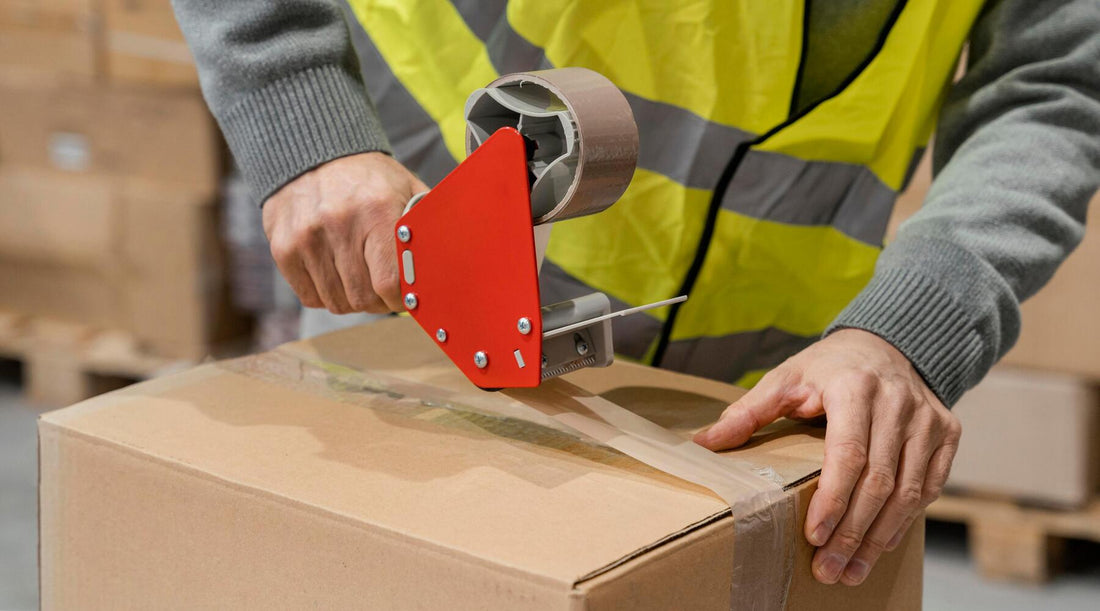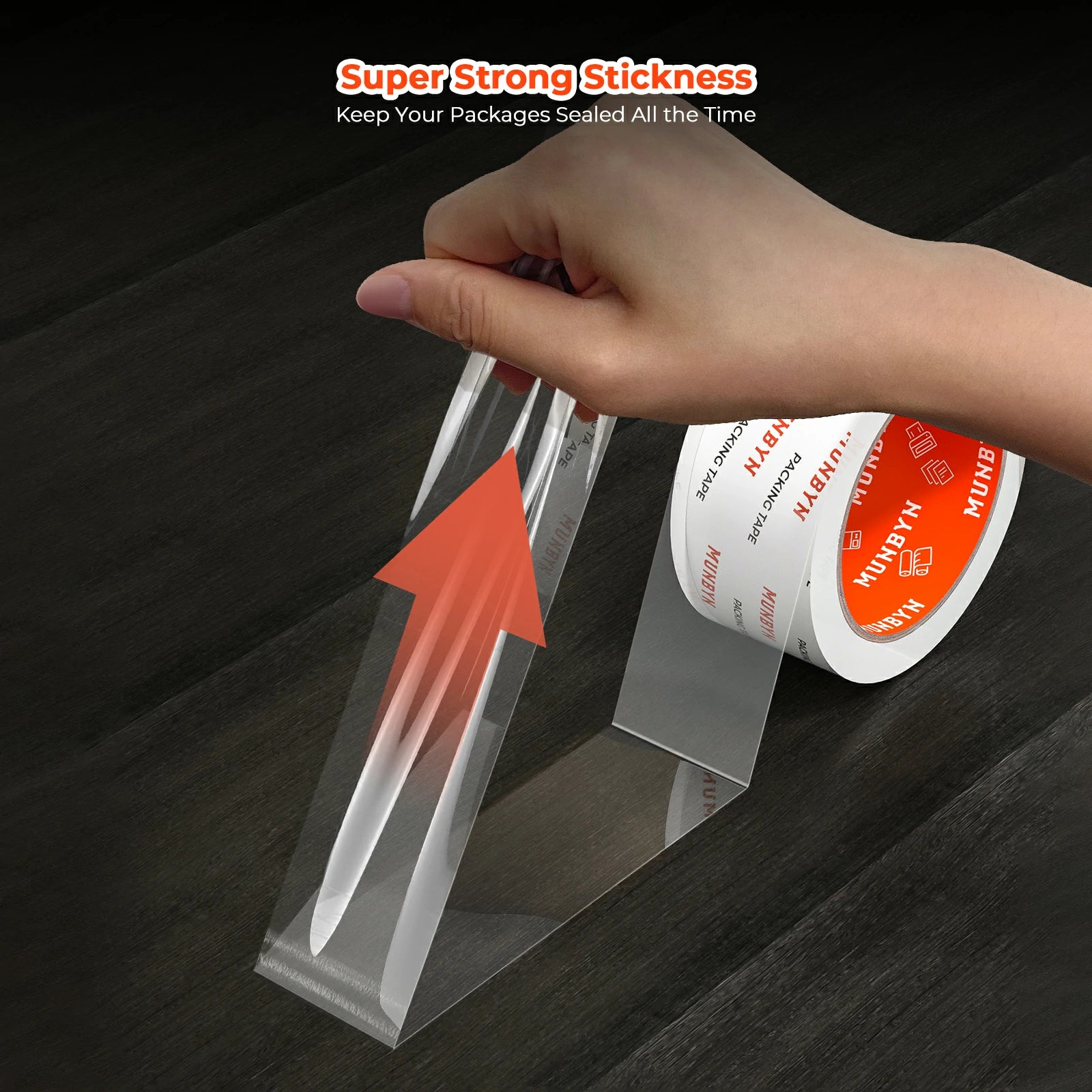Shipping Tape VS Packing Tape: What's the Difference

In today's fast-paced world, where online shopping and shipping are more popular than ever, understanding the tools used in packaging is essential. One of the most common yet confusing aspects of packaging is the difference between shipping tape and packing tape. While they may look similar at first glance, these two types of tapes are not the same thing. When we go deeper, we can find that they serve distinct purposes and have unique features.
Choosing the right tape can mean the difference between a secure shipment and one that falls apart before reaching its destination. In this article, we will explore what shipping tape and packing tape are, highlight their differences, and provide tips on how to choose the best tape for your logistics needs.
What Is a Shipping Tape
Shipping tape, often referred to as "parcel tape," is specifically designed for sealing packages that are intended for shipment. Usually made from polypropylene or polyester, shipping tape features strong adhesive properties that ensure parcels remain securely closed during transit. This type of tape is typically clear, although it can also come in other colors like brown or tan.
One of the standout features of shipping tape is its durability. It is resistant to temperature variations, moisture, and abrasion, making it ideal for long-distance or international shipments. Because of its robust nature, shipping tape provides a high level of security for parcels, reducing the risk of tampering or accidental opening.
What Is a Packing Tape
Packing tape is a versatile tape commonly used for sealing boxes and securing items within them. Made from materials like acrylic or hot melt adhesives, it is generally less robust than shipping tape but still offers adequate adhesion for most packing needs. Packing tape is usually clear but is also available in various colors to match different packaging requirements.

One of the primary advantages of packing tape is its ease of use. The tape can easily be dispensed using handheld tape dispensers, making it convenient for both personal and commercial use. Additionally, packing tape is generally more affordable compared to shipping tape, which makes it a cost-effective option for everyday use.
Differences Between Shipping Tape and Packing Tape
Alright, let's break down the key differences between the two packaging materials in a straightforward and easy-to-understand way. Whether you're sealing boxes for a big move or sending packages across the country, knowing which tape to use can save you a lot of hassle.
1. Material
Shipping Tape: Shipping tape is usually made from tougher stuff like polypropylene or polyester. These materials make it super strong and durable, perfect for packages that might get jostled around during long trips.Packing Tape: On the flip side, packing tape is often made from acrylic or hot melt adhesives. These are still good, but not as heavy-duty. Think of packing tape as your reliable everyday partner – great for most tasks, but not meant for extreme conditions.
2. Adhesion Strength
Shipping Tape: This tape sticks like glue – literally! Its adhesive is really strong, making sure your package stays sealed even if it goes through rough handling or varying temperatures.
Packing Tape: While packing tape has decent sticking power, it's more moderate compared to shipping tape. It's perfect for general use, like sealing boxes for moving or storage, but might not hold up as well under tough conditions.
3. Durability
Shipping Tape: Durability is where shipping tape shines. It stands up to heat, cold, moisture, and scratches, making it ideal for long-distance shipping or international parcels.Packing Tape: Packing tape is sturdy enough for local deliveries or short-term storage. However, it might struggle in extreme weather or wet conditions. It's dependable, just not invincible.
4. Ease of Use
Shipping Tape: Given its strong adhesive, shipping tape can be a bit stubborn. It might take a little more effort to apply and peel off, especially without the right tools.
Packing Tape: Packing tape is a breeze to use. It easily rolls out and cuts with a simple tape dispenser, making it quick and convenient for frequent use.
Here's a simple table for quick comparison between the two:
| Feature | Shipping Tape | Packing Tape |
| Material | Polypropylene/Polyester | Acrylic/Hot Melt Adhesives |
| Adhesion | High | Moderate |
| Durability | High | Moderate |
| Cost | Higher | Lower |
| Ease of Use | Require more effort | User-friendly |
Understanding these differences helps ensure you pick the right tape for your needs. Whether it's securing a gift for a friend or preparing an important shipment, now you know which tape will do the job best!
How to Choose the Right Tape for Your Logistics
Choosing the right tape doesn't have to be complicated. Here are some key factors to consider that will help you make the best choice.
Material
Tapes come in various materials like polypropylene, polyester, acrylic, and hot melt adhesives. These materials affect the tape's durability and flexibility. Polypropylene and polyester tapes are tough and durable for heavy-duty tasks, while acrylic and hot melt tapes are great for general use.
Adhesion Strength
The tape's sticking power is crucial for keeping packages sealed. Strong adhesive tapes can handle rough handling and long journeys, making them perfect for important shipments. For everyday tasks like moving or temporary storage, tapes with moderate adhesion work just fine.
Application Convenience
Easy-to-use tapes save time and effort, especially when you have lots of items to pack. Look for tapes that are easy to dispense and cut, ideally those that work well with handheld dispensers for quick and frequent packing.
Durability
Depending on your shipping and storage conditions, you might need a tape that resists temperature changes, moisture, and abrasion. High-durability tapes are ideal for long-distance or international shipments. For local deliveries or short-term storage, tapes with moderate durability will do the job.
Cost
Tape prices vary based on their quality and performance. Premium tapes made from high-quality materials with strong adhesion and durability tend to cost more. However, for valuable or heavy items, it's worth the investment. For everyday packing needs, more affordable tapes that offer good quality can be a smart choice.
By considering these factors, you can easily choose the best tape for your logistics needs, ensuring everything stays secure and intact throughout its journey. For a reliable option, consider using MUNBYN packing tape, known for its durability and strong adhesive properties.
Advanced Tips for Using Shipping and Packing Tapes
Knowing the basics of the two tapes is not enough, here are some advanced tips to get the most out of your shipping and packing tapes:
Tip 1 Clean Surfaces: Ensure the surface of the box is clean and dry before applying the tape. Dirt and moisture can weaken the adhesive, reducing its effectiveness. If the box is dusty or greasy, wipe it down with a damp cloth and let it dry completely before taping.
Tip 2 Use Tape Dispenser: Use a tape dispenser for quick and efficient application. It saves time and ensures the tape is applied evenly. A good tape dispenser can also help you cut the tape neatly without any jagged edges, making your packages look more professional.
Tip 3 Double Tape: For extra security, especially for heavy or valuable items, consider double-taping the seams of your package. This adds an extra layer of protection. Start by taping along the center seam, then add strips along the edges to reinforce the entire structure.
Tip 4 Store Properly: Store your tapes in a cool, dry place to maintain their adhesive properties. Extreme temperatures can affect the tape's performance. High heat can make the adhesive too sticky, while cold can make it brittle and less effective. Keep them away from direct sunlight and humidity for best results.
By following these tips, you can make sure your items are packed well and arrive safely at their destination.
Conclusion
Understanding the differences between shipping tape and packing tape is crucial for secure deliveries. Shipping tape is very strong and sticks well, making it good for long trips or valuable items. On the other hand, packing tape is easier to use and cheaper for daily tasks. When picking tape, think about how well it sticks and how thick it is. Notably, MUNBYN has good tape options that fit different needs, helping you pack things safely and efficiently.






